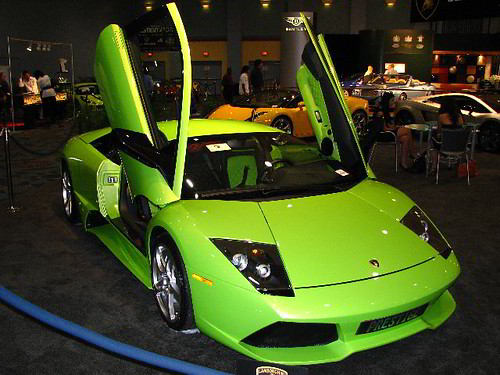|
|
|---|
Tuesday, September 1, 2009
Investing in REE: China Tightens Grip on Rare Minerals TNR.v, CZX.v, AVL.to, RES.v, BYDDY, TM, NSANY, TTM, F, WLC.v, SQM, ROC, FMC, RM.v, LI.v, CLQ.v,
Posted by andre at 4:22 PMChina already de facto controls US Treasury market and US Dollar miserable destiny, will they control the Green Future in the end in exchange for worthless dollars?

Now we have more insight in July announcement by TNR Gold TNR.v about strategic investment by Canada Zinc Metals CZX.v - is Chinese Tongling real intention to take control over our Junior player in the Next Big Thing? Canaccord has already put CZX.v on the list of Chinese potential take over targets, will they just become a stakeholder in TNR Gold TNR.v after that or will they move more aggressively before International Lithium Corp spin off? We hope that TNR Gold TNR.v management will be able to hold the fort and make International Lithium Corp public before it and we will enjoy the ride. In the end those controlling supply of REE and Lithium will control the Next Big Thing - the market of Electric Cars.
"As evidence of the quality of the properties owned by Canada Zinc Metals, a large Chinese mining group, Tongling Nonferrous Metals Group Holdings Co. Ltd. ("Tongling"), has recently invested $4.9 million in Canada Zinc Metals for a 13-per-cent equity position. Tongling, a state-owned enterprise based in Anhui province, is one of China's largest copper smelting companies and ranked in the top 100 large-scale industry enterprises in China. Tongling's principal activities are exploration, mining, ore processing, smelting & refining and products processing of copper, lead, zinc, gold, silver and other non-ferrous and rare metals. China has over half of the world's deposits of rare earths, over 80% of worldwide production, and has recently shown significant interest in becoming majority shareholders of various rare earth miners such as Lynus Corp. and Arafura Resources."
"For China, it seems that “security of supply” has evolved into a synonym for “competitive advantage”. Chinese demand for metals has been a significant factor in maintaining high metal prices and now it appears that China’s appetite for metals could begin to have a more significant impact on the pricing of mining equities. From an investor’s perspective, the goal is to own what China needs and China needs metals"
By KEITH BRADSHER
Published: August 31, 2009
HONG KONG — China is set to tighten its hammerlock on the market for some of the world’s most obscure but valuable minerals.
Juergen Bauer/www.smart-elements.com
China is cutting exports of elements like terbium, pressuring manufacturers to open factories there.
Yuriko Nakao/Reuters
Toyota’s Prius hybrids use several pounds of neodymium, a rare earth, in their electric motors.
China currently accounts for 93 percent of production of so-called rare earth elements — and more than 99 percent of the output for two of these elements, dysprosium and terbium, vital for a wide range of green energy technologies and military applications like missiles.
Deng Xiaoping once observed that the Mideast had oil, but China had rare earth elements. As the Organization of the Petroleum Exporting Countries has done with oil, China is now starting to flex its muscle.
Even tighter limits on production and exports, part of a plan from the Ministry of Industry and Information Technology, would ensure China has the supply for its own technological and economic needs, and force more manufacturers to make their wares here in order to have access to the minerals.
In each of the last three years, China has reduced the amount of rare earths that can be exported. This year’s export quotas are on track to be the smallest yet. But what is really starting to alarm Western governments and multinationals alike is the possibility that exports will be further restricted.
Chinese officials will almost certainly be pressed to address the issue at a conference Thursday in Beijing. What they say could influence whether Australian regulators next week approve a deal by a Chinese company to acquire a majority stake in Australia’s main rare-earth mine.
The detention of executives from the British-Australian mining giant Rio Tinto has already increased tensions.
They sell for up to $300 a kilogram, or up to about $150 a pound for material like terbium, which is in particularly short supply. Dysprosium is $110 a kilo, or about $50 a pound. Less scare rare earth like neodymium sells for only a fraction of that.
(They are considerably less expensive than precious metals because despite the names, they are found in much higher quantities and much greater concentrations than precious metal.)
China’s Ministry of Industry and Information Technology has drafted a six-year plan for rare earth production and submitted it to the State Council, the equivalent of the cabinet, according to four mining industry officials who have discussed the plan with Chinese officials. A few, often contradictory, details of the plan have leaked out, but it appears to suggest tighter restrictions on exports, and strict curbs on environmentally damaging mines.
Beijing officials are forcing global manufacturers to move factories to China by limiting the availability of rare earths outside China. “Rare earth usage in China will be increasingly greater than exports,” said Zhang Peichen, the deputy director of the government-linked Baotou Rare Earth Research Institute.
Some of the minerals crucial to green technologies are extracted in China using methods that inflict serious damage on the local environment. China dominates global rare earth production partly because of its willingness until now to tolerate highly polluting, low-cost mining.
The ministry did not respond to repeated requests for comment in the last eight days. Jia Yinsong, a director general at the ministry, is to speak about China’s intentions Thursday at the Minor Metals and Rare Earths 2009 conference in Beijing.
Until spring, it seemed that China’s stranglehold on production of rare earths might weaken in the next three years — two Australian mines are opening with combined production equal to a quarter of global output.
But both companies developing mines — Lynas Corporation and smaller rival, Arafura Resources — lost their financing last winter because of the global financial crisis. Buyers deserted Lynas’s planned bond issue and Arafura’s initial public offering.
Mining companies wholly owned by the Chinese government swooped in last spring with the cash needed to finish the construction of both companies’ mines and ore processing factories. The Chinese companies reached agreements to buy 51.7 percent of Lynas and 25 percent of Arafura.
The Arafura deal has already been approved by Australian regulators and is subject to final approval by shareholders on Sept. 17. The regulators have postponed twice a decision on Lynas, and now face a deadline of next Monday to act.
Matthew James, an executive vice president of Lynas, said that the company’s would-be acquirer had agreed not to direct the day-to-day operations of the company, but would have four seats on an eight-member board.
Expectations of tightening Chinese restrictions have produced a surge in the last two weeks in the share prices of the few non-Chinese producers that are publicly traded. In addition to the two Australian mines, Avalon Rare Metals of Toronto is trying to open a mine in northwest Australia, and Molycorp Minerals is trying to reopen a mine in Mountain Pass, Calif.
Unocal used to own the Mountain Pass mine, which suspended mining in 2002 because of weak demand and a delay in an environmental review. State-owned Cnooc of China almost acquired the mine in 2005 with its unsuccessful bid for Unocal, which was bought instead by Chevron; Chinese buyers tried to persuade Chevron to sell the mine to them in 2007, but Chevron sold it to Molycorp Minerals, a private American group.
A single mine in Baotou, in China’s Inner Mongolia, produces half of the world’s rare earths. Much of the rest — particularly some of the rarest elements most needed for products from wind turbines to Prius cars — comes from small, often unlicensed mines in southern China.
China produces over 99 percent of dysprosium and terbium and 95 percent of neodymium. These are vital to many green energy technologies, including high-strength, lightweight magnets used in wind turbines, as well as military applications.
To get at the materials, powerful acid is pumped down bore holes. There it dissolves some of the rare earths, and the slurry is then pumped into leaky artificial ponds with earthen dams, according to mining specialists.
The Ministry of Industry and Information Technology has cut the country’s target output from rare earth mines by 8.1 percent this year and is forcing mergers of mining companies in a bid to improve technical standards, according to the government-controlled China Mining Association, a government-led trade group.
General Motors and the United States Air Force played leading roles in the development of rare-earth magnets. The magnets are still used in the electric motors that control the guidance vanes on the sides of missiles, said Jack Lifton, a chemist who helped develop some of the early magnets.
But demand is surging now because of wind turbines and hybrid vehicles.
The electric motor in a Prius requires 2 to 4 pounds of neodymium, said Dudley Kingsnorth, a consultant in Perth, Australia, whose compilations of rare earth mining and trade are the industry’s benchmark.
Mr. Lifton said that Toyota officials had expressed strong worry to him on Sunday about the availability of rare earths.
Toyota and General Motors, which plans to introduce the Chevrolet Volt next year with an electric motor that uses rare earths, both declined on Monday to comment.
Rick A. Lowden, a senior materials analyst at the Defense Department, told a Congressional subcommittee in July that his office was reviewing a growing number of questions about the availability of rare earths.
China is increasingly manufacturing high-performance electric motors, not just the magnets.
“The people who are making these products outside China are at a huge disadvantage, and that is why more and more of that manufacturing is moving to China," Mr. Kingsnorth said.
Subscribe to:
Post Comments (Atom)
















0 comments:
Post a Comment